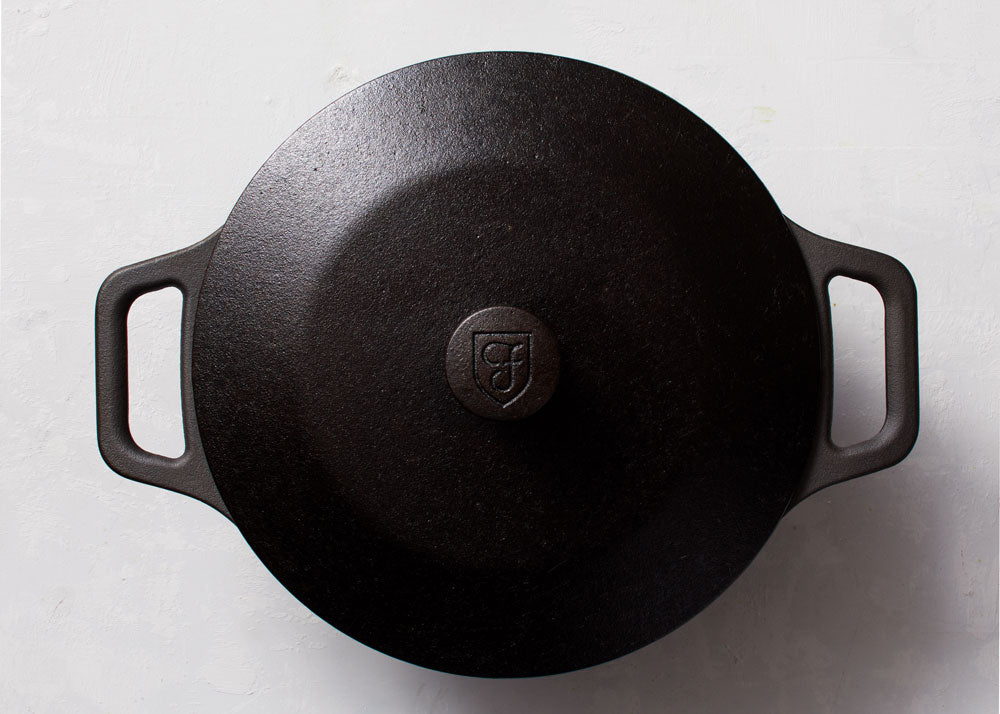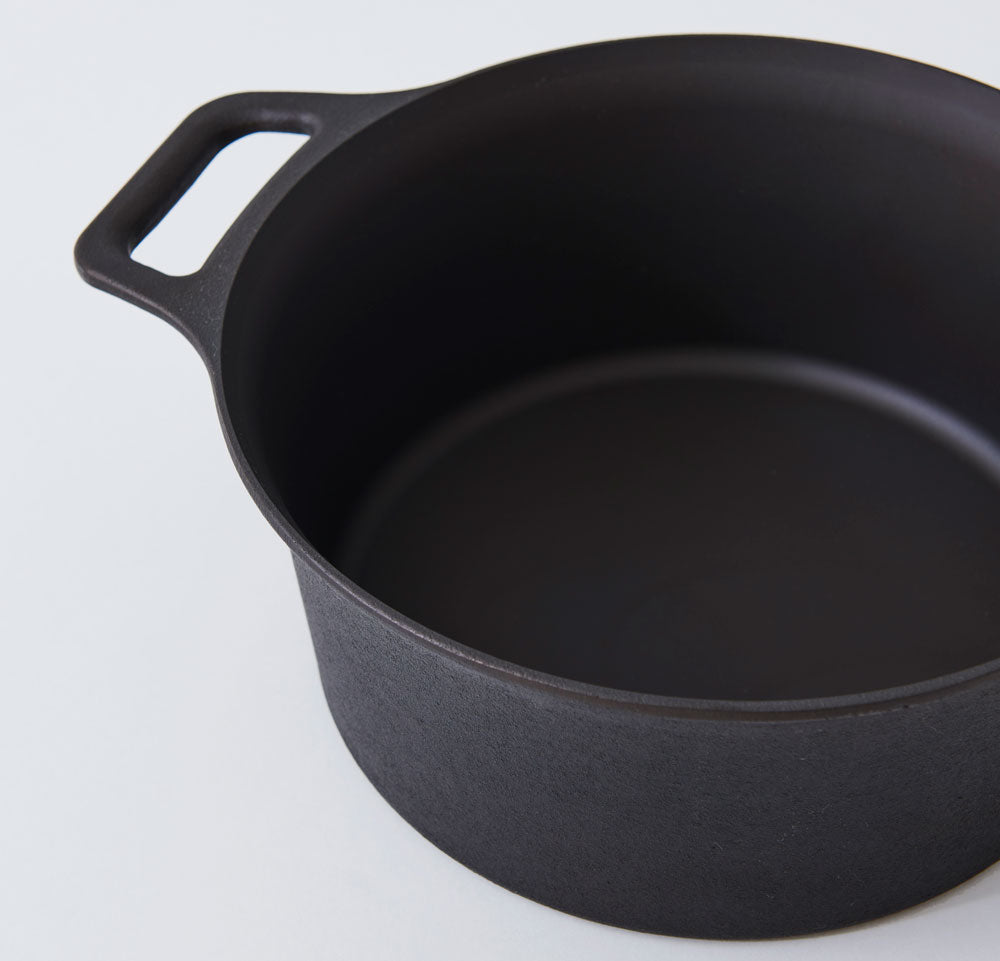The cast iron skillet is an icon of American food culture but in many ways the Dutch oven has a longer, deeper history in our culinary traditions.
The cast iron skillet is an icon of American food culture but in many ways the Dutch oven has a longer, deeper history in our culinary traditions.

The first Dutch ovens were heavy-bottomed pots suitable for cooking over, or adjacent to, open flames. (The “Dutch” moniker refers to the national origin of the 18th-century sand-casting process still used to produce cast iron cookware, including Field Skillets and Dutch ovens.) These early Dutch ovens were versatile tools, equally suited to high-heat cooking and slow simmers, and they were portable enough (though heavy) for using outdoors over a fire—think cowboys and chuckwagons.
Today, Dutch ovens continue to serve a wide range of culinary applications, from braising and roasting, to chili-making and bread baking, and are excellent distributors of heat, naturally non-stick, easy to clean, and comfortable to maneuver from stovetop to oven to dinner table. That’s a tall order, and the kind of problem we love to solve.
Here’s how we designed a lighter, smoother Field Dutch Oven, a reliable kitchen workhorse years in the making.
For a company known for making lightweight skillets, the Dutch oven presented a fundamental challenge: most Dutch ovens are very heavy. But why?
We started by looking at the iron: Many Dutch ovens, especially those manufactured in France and China, often have an enamel coating on the cooking and exterior surfaces. Manufacturers apply the coating to help reduce sticking, but beneath the enamel, you’ll find thick, heavy, rough cast iron, similar to a raw casting.
Many modern cast iron skillets have similar semi-rough surfaces; it’s easier to produce a rough pan, but the result is always heavy. By machining away excess rough iron, we’re able to achieve a lightweight pan with a smooth, seasoning-friendly cooking surface—exactly how vintage cookware manufacturers did it.

The interior surfaces of the Field Dutch Oven are machined to produce the same smooth and seasoning-friendly cooking as our skillets, while reducing the overall weight of the base to an almost-unbelievable 6.5 lbs—about 30 to 40 percent lighter than the average comparable enameled pot—without losing the heft needed for cast iron cooking. The first time you pick one up, you’ll see what we mean.
Proponents of enamel coatings argue that the extra layer makes for a non-stick and easy-to-clean pot, two characteristics that are already strengths for our cast iron cookware.
A frequently used skillet (or Dutch oven) will be naturally non-stick, thanks to a durable base of out-of-the-box seasoning—our factory seasoning process calls for three coats of grapeseed oil, minimum—and the resilient seasoning developed by regular cooking.
Like all smooth, vintage-style cast iron cookware, our Dutch oven—and its seasoning—will get better with time and use. And it doesn’t hurt that a Dutch oven is the best vessel for the cooking methods (searing, frying, roasting, and baking) that help to build and maintain resilient seasoning.
Our 4.5-quart Dutch oven is the perfect size for everyday use, whether you’re slow-simmering a braise, roasting a chicken, or baking bread. Its excellent heat retention also makes it an all-purpose frying tool, and its depth is well-suited to deep or shallow frying. To help build up layers of seasoning on your new Field Dutch Oven, try frying just about anything; chicken wings, apple cider funnel cakes, or French fries are great places to start.

The Field Dutch Oven also has thicker base than its sister skillet, the No.8, which helps it retain and distribute steady heat for braises, stews, and other dishes requiring long cook times to break down proteins and meld flavors.
This is where its snug-fitting cast iron lid shines: the self-basting ridges on the lid’s underside help recirculate liquid, depositing moisture throughout the cooking area—and not just dripping down the sides.

For bakers, cast iron Dutch ovens offer another key advantage: they’re safe for use in high-heat ovens, where some enamel coatings, synthetic handles, and knobs aren’t rated for temperatures above 400°F. For your favorite no-knead loaf, stick with cast iron.

Dutch Ovens, skillets and other cast iron cookware pieces should last a lifetime, and seasoned cast iron will last much longer than ceramic or enameled pieces—especially with heavy use.
Cast iron seasoning gets better with time and use; enamel, ceramic, and other coatings don’t. In fact, these coatings are susceptible to scratching and chipping over time—and you can’t fix chipped enamel with more cooking the way you can easily re-season cast iron.

Field Skillets and Dutch Ovens are made for a lifetime of use. Dive right in, and start with our collection of No.8 recipes to see what a cast iron Dutch oven can do.